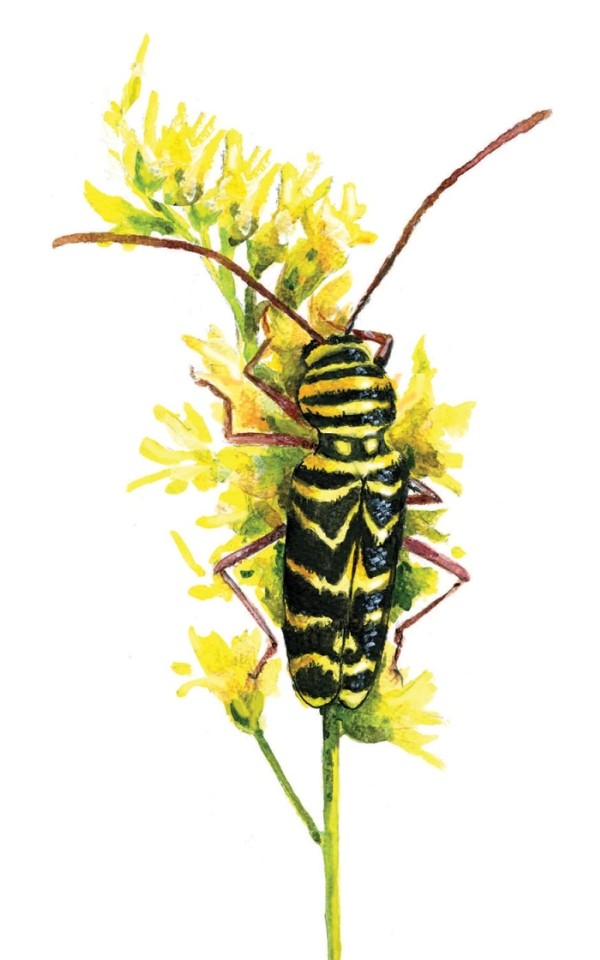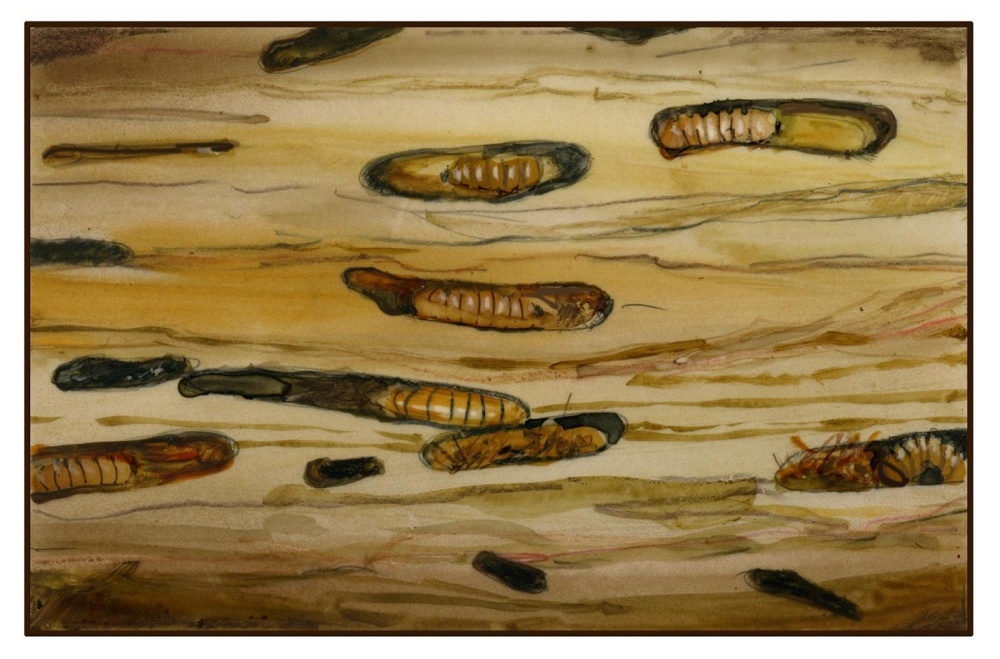
Goldenrods in bloom are the Grand Central Station for insects. Some insects come in search of nectar, others for pollen, more for mates, and still others are predators for whom the diverse community is a walking-and-flying smorgasbord. In early fall, I supply my college students with nets and send them out to hunt through the stands of resplendent fall blooms. This activity is an ideal way to expose the students to a diverse assemblage of six-legged finds.
Netting insects, however, is not without hazards, and on a recent foray, I was drawn to one student’s shriek. His reaction was entirely reasonable. He had captured an adult locust borer (Megacyllene robiniae), a striking, black-and-yellow tiger-striped beetle. The insects are also a full inch long and buzz frantically when captured. Any reasonable person would react with caution.
Most predators learn early that buzzy, black-and-yellow insects usually come with a sting in the tail, and are therefore best avoided. But in the locust borer’s case, the stripes and buzz are just bluff and bluster with nothing to back it up. Unlike wasps, locust borers lack stingers and are engaged in false advertising, a form of mimicry first described by Henry Walter Bates in 1861. Batesian mimics trick predators into mistaking them for more dangerous, noxious, or otherwise unpalatable species.
Except for its exceptionally long antennae (about three-quarters of the insect’s body length from its head) the locust borer is a convincing yellow jacket mimic, close enough to give any predator or entomology student pause. The ruse is even preserved in flight. When locust borers flip up their black-and-yellow-striped elytra to release their flight wings, their previously concealed abdomens are similarly striped as their heads, thoraces, and wing coverings.
Despite their formidable appearance, locust borers don’t even harm other insects. Rather, these spectacular beetles dine quietly on pollen and move more than enough of it about to pollinate goldenrods. Returning the favor, the goldenrods serve as meeting places where female and male locust borers match up. After mating, the females strike out in search of a different plant: the black locust tree (Robinia pseudoacacia), which is the only known host for their larvae. The females lay eggs under loose bark, or in tree crevices. Once hatched, the larvae tunnel deeper into the bark and prepare a small chamber for winter dormancy.
In spring, the larvae commence feeding on the wood of their host tree. In common with other long-horned beetle species, the larvae are referred to as round-headed borers. Behind the dark brown head, a larva’s pale body is deeply segmented with constrictions reminiscent of the Michelin Man. By midsummer, larvae stop feeding and pupate. Adult beetles emerge from the trees in August or early September.
Because the black locust is the only known host, the historical range of insect matches that of the tree (from central Pennsylvania roughly following the Appalachians southwest into Alabama, and as far west as the Arkansas/Oklahoma border). However, both species expanded their range beginning in the 18th century, as people planted black locust for such uses as fence posts and, later, railroad ties. Black locust now grows wild in the lower 48 states and is considered invasive in the Northeast; this explains why a bunch of Saint Michael’s College students can catch locust borers in Vermont fields.
The tree and the beetles coevolved, so tree death by locust borer is a long, drawn-out process that leaves plenty of time for root sucker and seed production. But that is not to say there is no damage as the larvae chew extensive tunnels deep into the heartwood and down the branches. If you walk into a stand of locust trees in summer, you may be able to find examples of larval galleries in the fallen debris. Because of the larvae’s tunneling deep in the wood, branches and treetops that look perfectly sound can snap and fall to the ground. Ironically, the only time that this insect poses any hazard to people is when it is small, silent, and hidden – instead of an inch long and buzzing, and flashing its stripes on a flower near you.



Discussion *